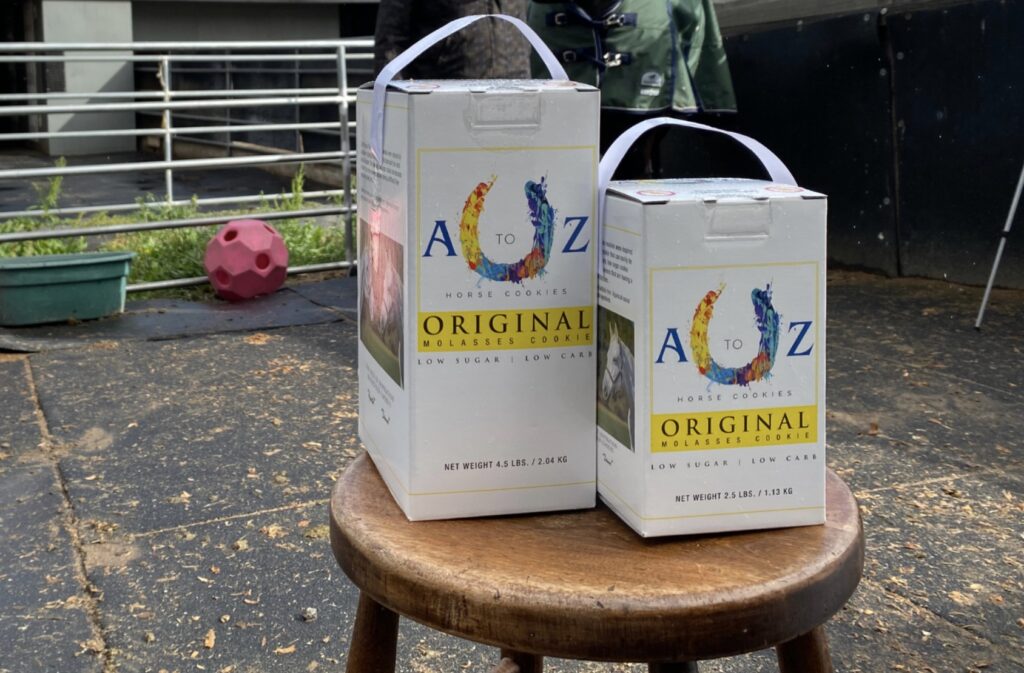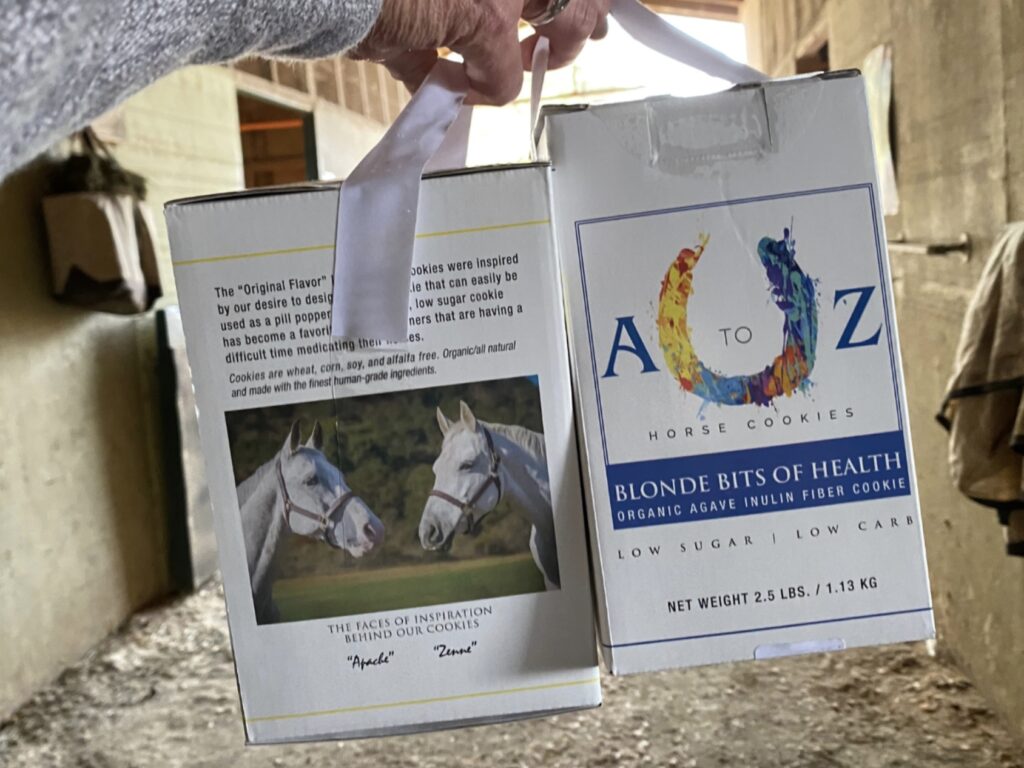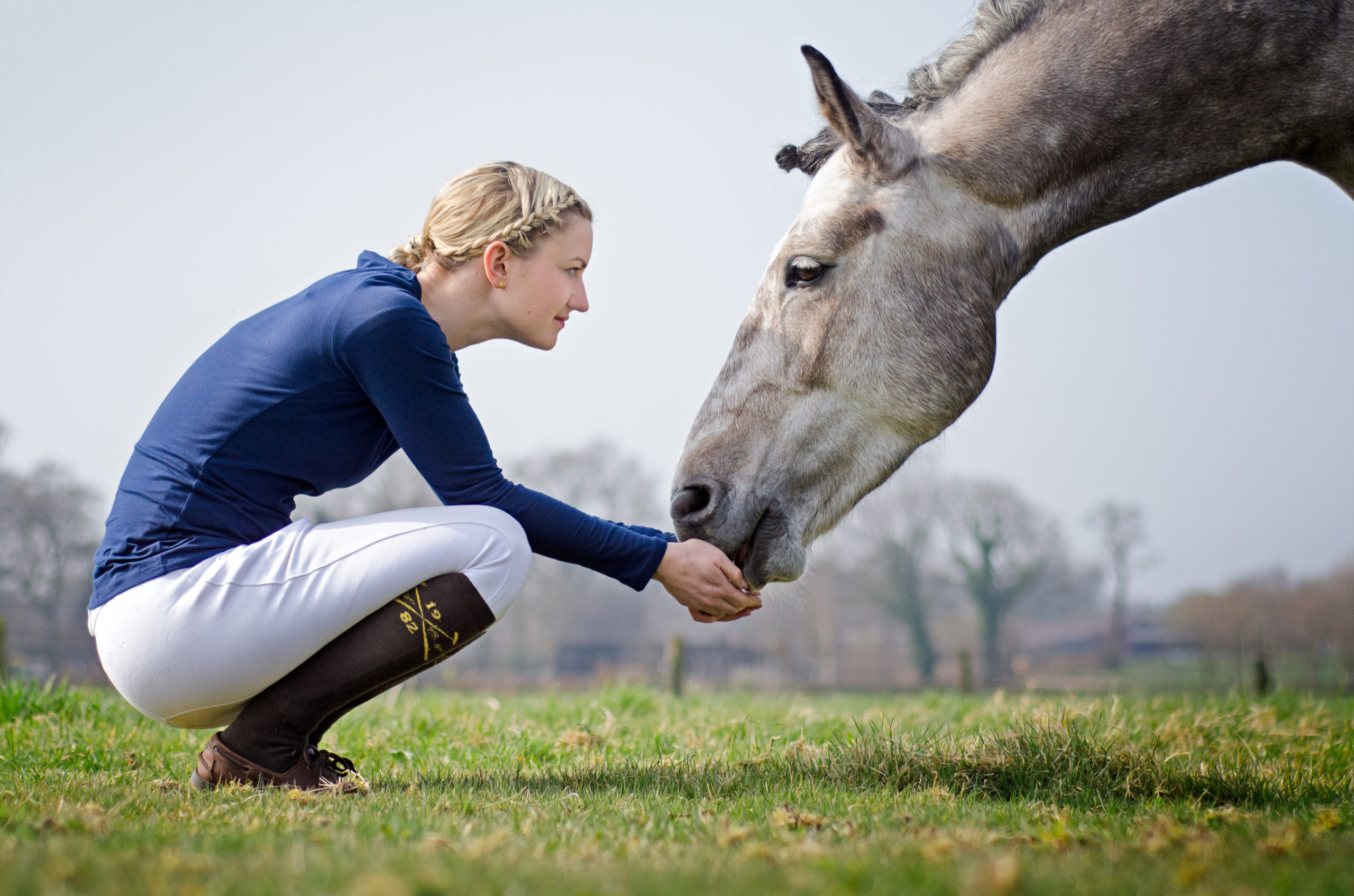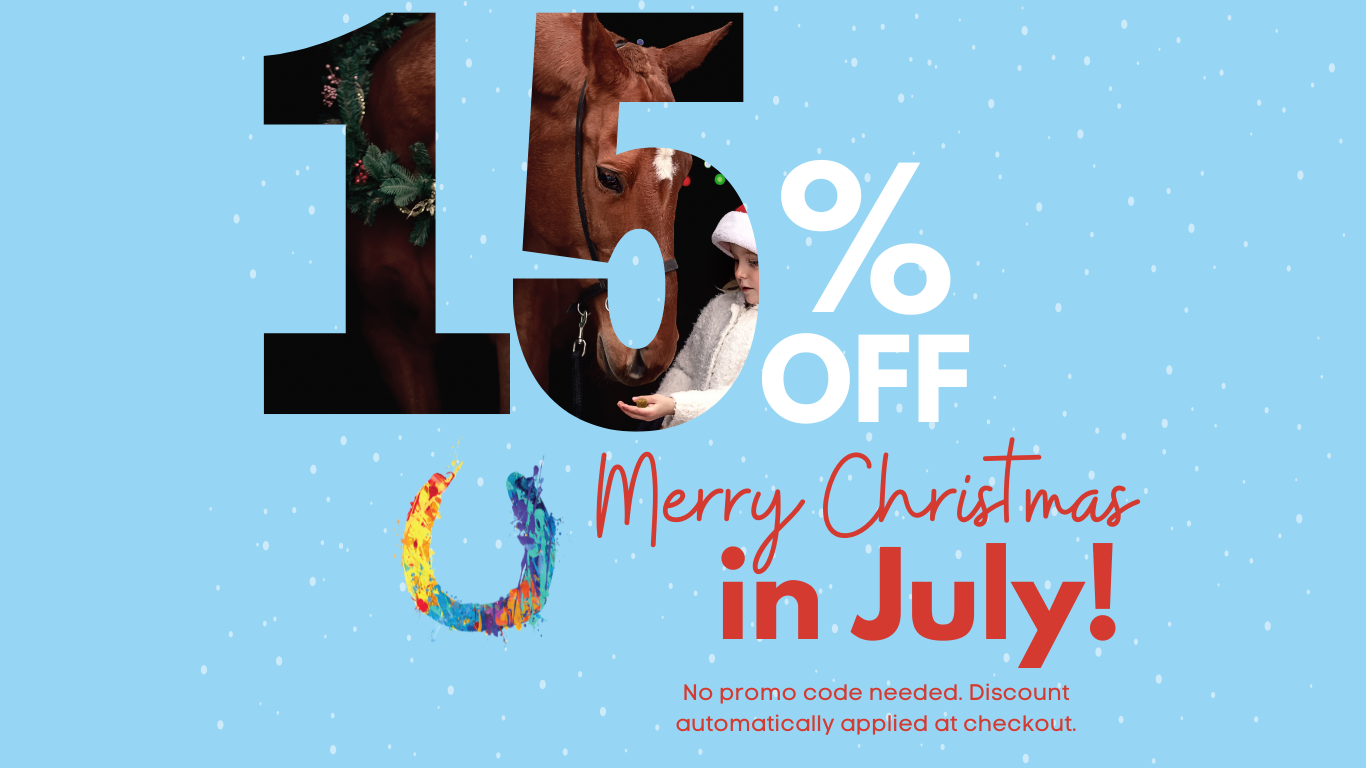Meet Cheryl Sandri and Marie Curley, Co-Founders of A to Z Horse Cookies
Hi, A to Z Horse Cookie fans and friends. We’re here today at the barn to show you the quickest way to pill your horse should you ever need to. These cookies that we developed are softer — they’re wheat, corn, soy, and alfalfa-free. They’re low-carb, low-sugar. You can find the lab results on the side of our box. Any questions that you may have, please always feel free to call us. The number is on the website at atozhorsecookies.com.
I’m going to show you the largest pills that we have here. I used to give these very large pills to my horse, who passed on some years ago. You line (the pills) up on one half of the cookie. These (cookies) are very large, so I can fit three very comfortably. Then what I do is I place the cookie back over the second part of the pliable cookie and what I do is I squeeze and press, squeeze and press, and cover the pills up until it forms a ball like this. And as you can see we’ve covered all the pills up. Then you hand it to your horse. This is Lincoln, everybody, and he’s a big fan of our cookies.
The most pliable horse cookies are made by A to Z. Designed to be used as a pill popper.
 This is the Original Flavor that is the most pliable, which we designed to be a horse pill popper. Now the second product that we have is the Agave Cookie made with agave and cinnamon, and it wasn’t designed to be a horse pill popper, however many use this as well. And I’ll show you. There are four small little pills here, and I’m placing them on the half of the cookie, and there are four on there right now. I take the other half, and I take my hand, and I push and press, and I make it into a little ball. I cover (the pills), and as you can see, they’re both very squeezy and pliable however, the Original Flavor, which is the light molasses cookie, is the best, especially if you have a lot of pills to give your horse.
This is the Original Flavor that is the most pliable, which we designed to be a horse pill popper. Now the second product that we have is the Agave Cookie made with agave and cinnamon, and it wasn’t designed to be a horse pill popper, however many use this as well. And I’ll show you. There are four small little pills here, and I’m placing them on the half of the cookie, and there are four on there right now. I take the other half, and I take my hand, and I push and press, and I make it into a little ball. I cover (the pills), and as you can see, they’re both very squeezy and pliable however, the Original Flavor, which is the light molasses cookie, is the best, especially if you have a lot of pills to give your horse.
A to Z Horse Cookies are perfect for administering pills or powders to your horse.
 Now, what’s interesting is that we also have placed powder in the middle of these cookies. What we do is I sometimes will take several cookies and make kind of a big cookie. I hollow it out in the middle. Place the powdered antibiotic, which I did for him recently, and then I just kind of fold the cookie over and press all the antibiotic powder inside the cookie. It works really well, and the best (cookie) really for that is the Original Flavor.
Now, what’s interesting is that we also have placed powder in the middle of these cookies. What we do is I sometimes will take several cookies and make kind of a big cookie. I hollow it out in the middle. Place the powdered antibiotic, which I did for him recently, and then I just kind of fold the cookie over and press all the antibiotic powder inside the cookie. It works really well, and the best (cookie) really for that is the Original Flavor.
If you have any questions regarding these cookies and how to pill pop, please feel free to call us at any time. These are very low-carb carb, low-sugar, very healthy cookies for your horse. They’re soft, and they won’t break the horse’s teeth, which is a good thing. Have a good day.



